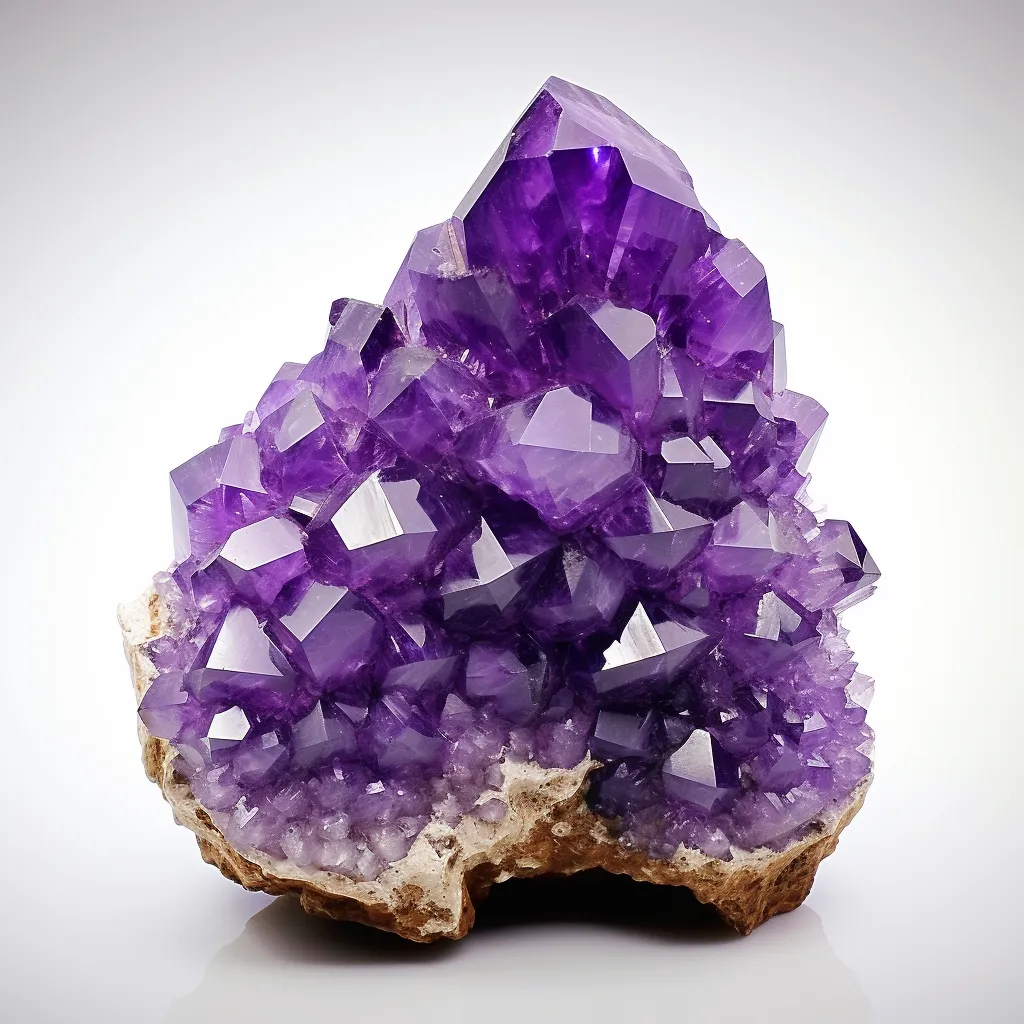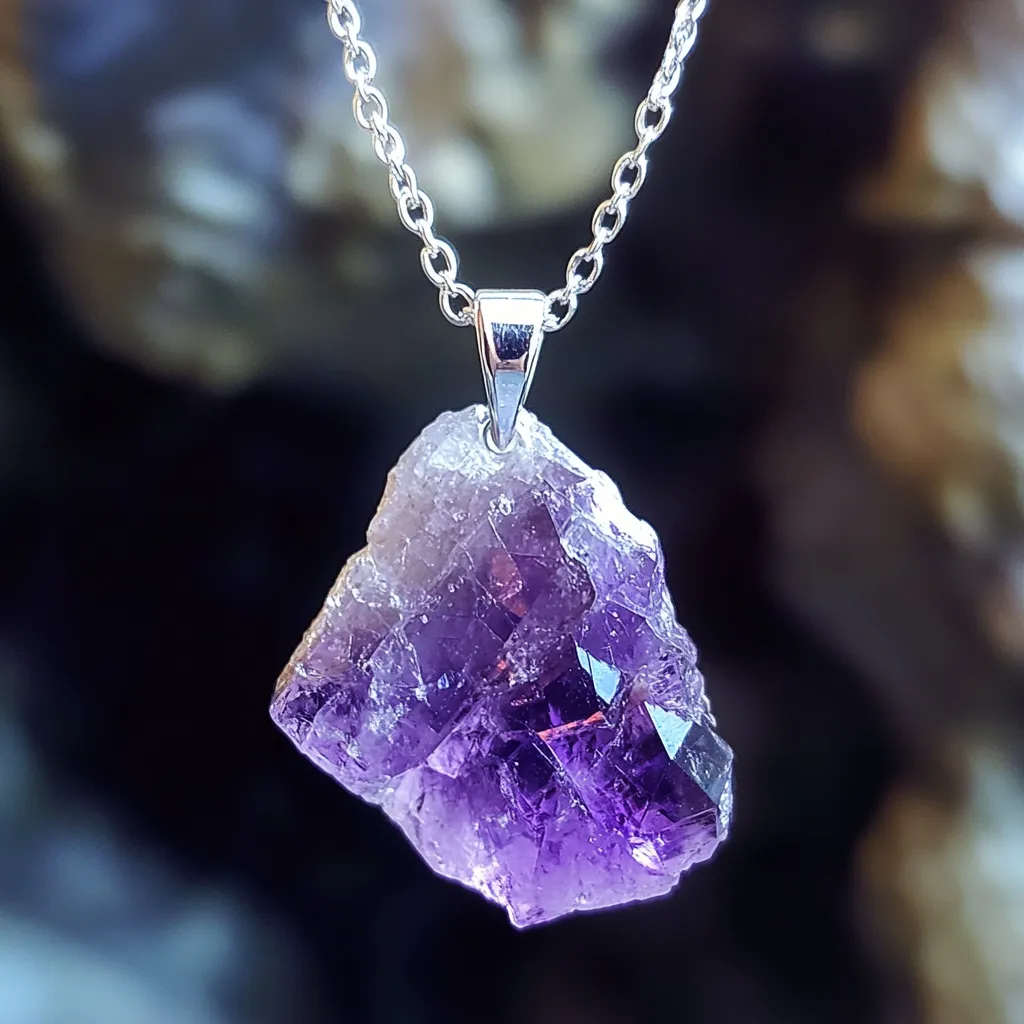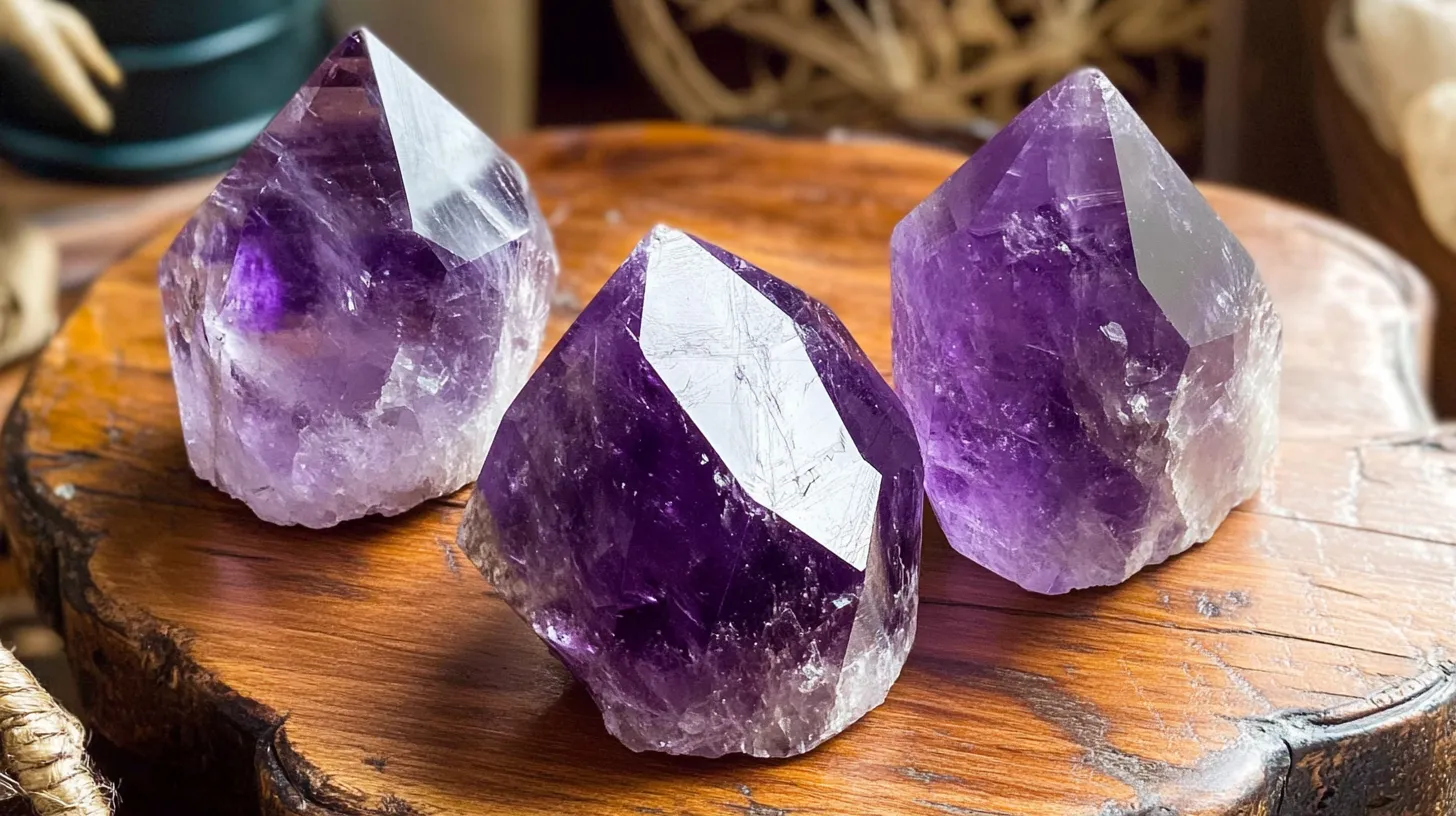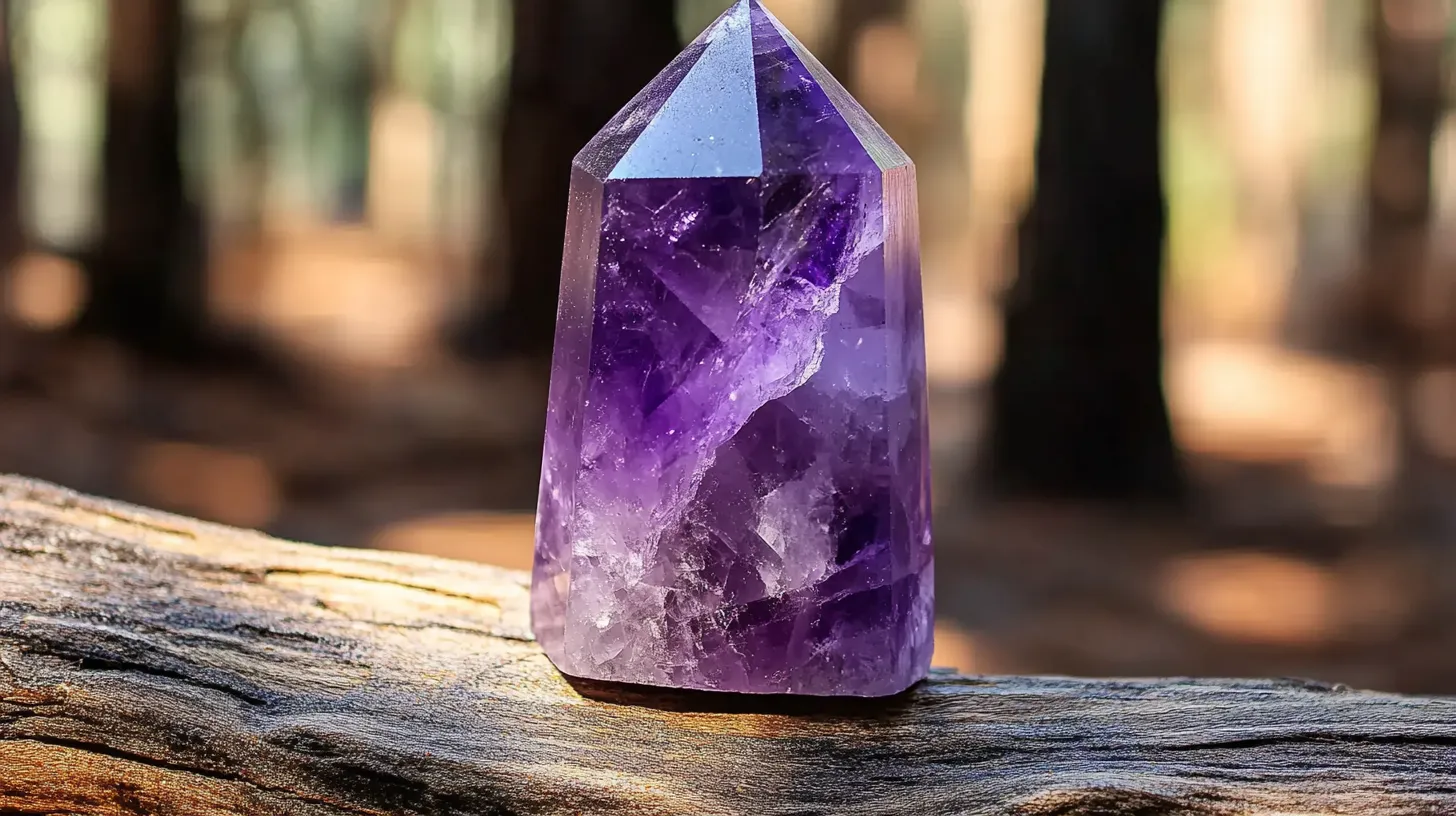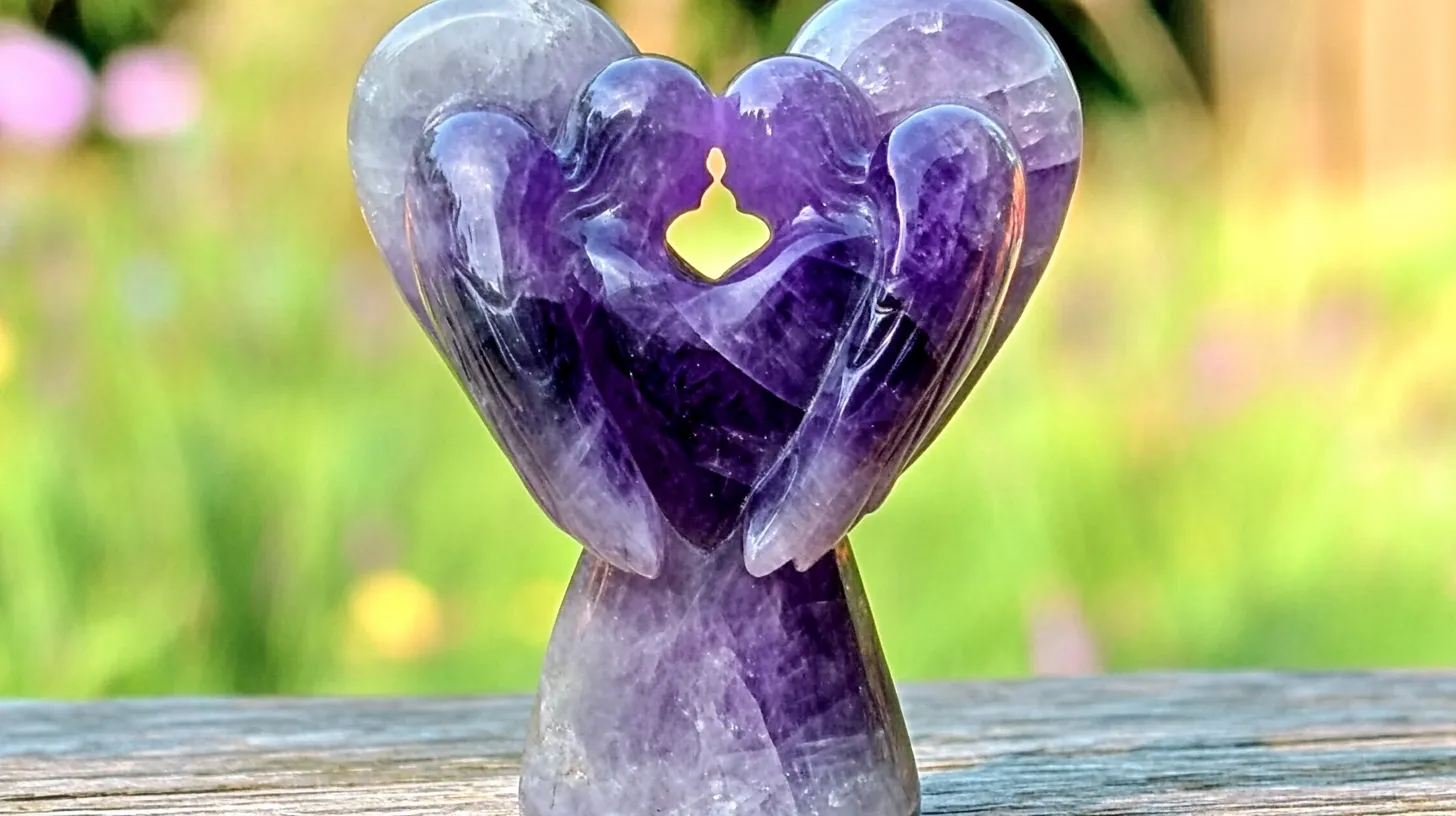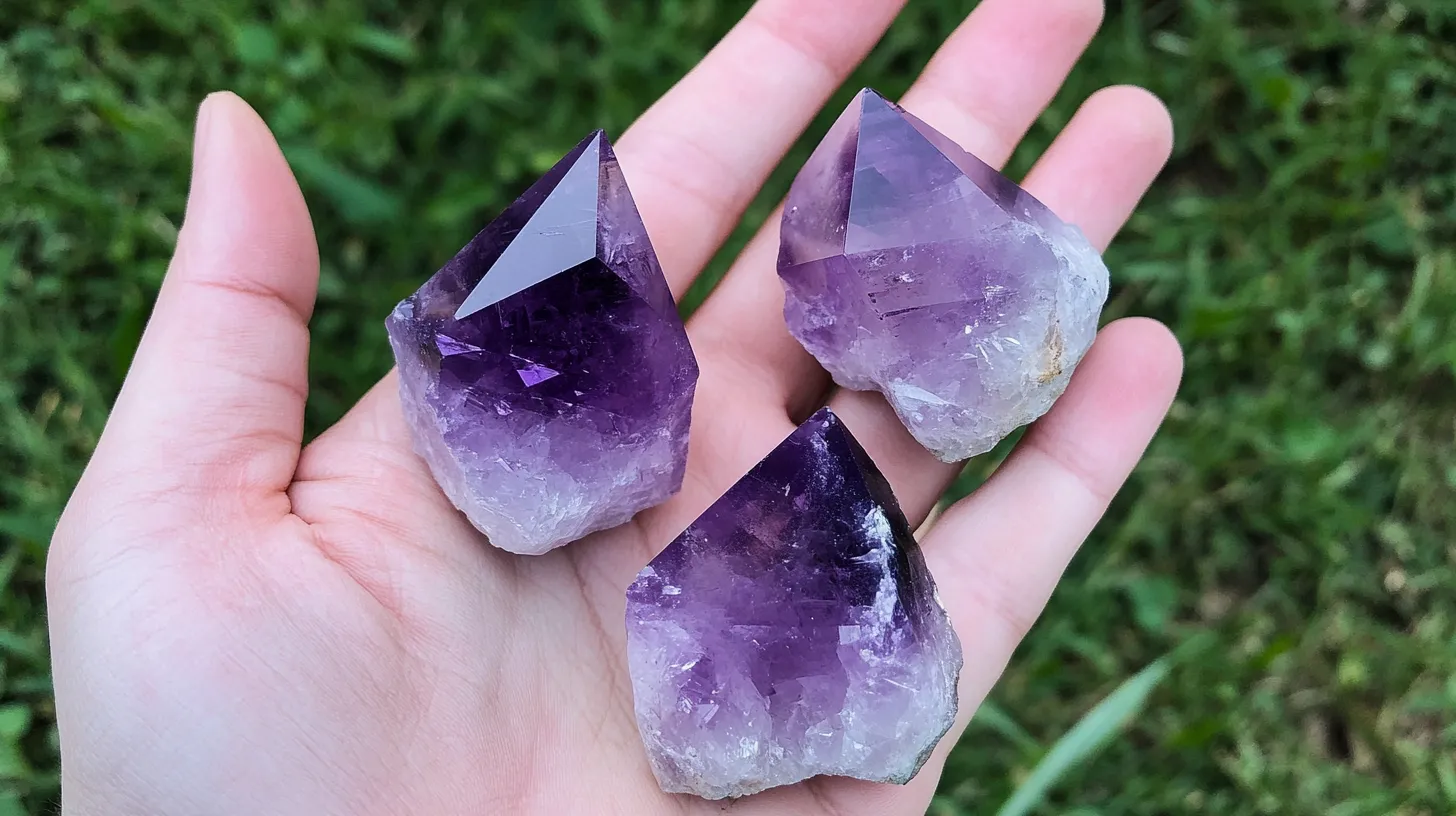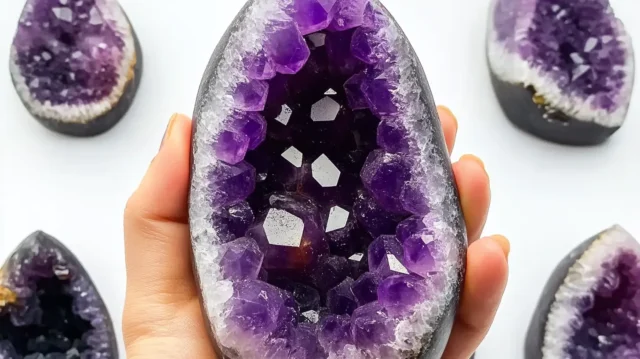

Colour of Amethyst
Though one of the most often used gemstones worldwide, amethyst’s vivid purple tones have caused you to wonder, “What colour is amethyst, really?” The straightforward response is purple; however, amethysts can range in colour from delicate lilac to deep, rich violet. Still, there’s more to it than just its purple colour! Let’s explore the intriguing realm of amethyst colour and see how it could change depending on elements, such as its chemical composition, source, and even cutting technique.

Amethyst’s Colour: The Foundations
One type of quartz called amethyst acquires its unique purple hue from natural radiation and iron contaminants in the crystal. But did you know that amethyst’s purple tone could vary from delicate lavender to nearly fiery purple? The concentration of iron and the degree of radiation the amethyst has encountered whilst developing on Earth determine the colour range.
The exposure of the gemstone to elements and surroundings affects the gradations of the purple hue of amethyst. Amethyst is so fascinating because it is not one set tint. Let’s examine several typical amethyst colours more closely:
- Light Amethyst (Lavender): A gentle, delicate tone with a faint, pastel-like quality. It can have a somewhat bluish tint and a softer tone overall.
- Medium Amethyst (Violet): The most commonly occurring colour. It is a somewhat intense, rich purple colour. Usually found in commercial pieces, this colour is most sought after in jewellery.
- Deep Amethyst (Dark Purple): Amethyst’s bold and dramatic effect comes from this dark, almost reddish-purple hue. These stones stand out much more since occasionally they have a tint of crimson.
- Colour Zoning: Amethyst can occasionally show a distinctive colour zoning, whereby one stone has regions of light and dark purple to produce a striped or gradient impression.
| Amethyst Colour Type | Description |
|---|---|
| Light Amethyst (Lavender) | Gentle, delicate tone with a faint, pastel-like quality; may have a bluish tint. |
| Medium Amethyst (Violet) | Somewhat intense, rich purple; most commonly used in jewellery. |
| Deep Amethyst (Dark Purple) | Bold, dramatic dark purple with occasional reddish tint. |
| Colour Zoning | Striped or gradient effect with light and dark purple regions. |

Elements Affecting Amethyst Colour
Many things influence the colour of amethysts. Whether light or dark, the intensity of purple relies on several elements. Let us disentangle them:
- Iron Content: The iron content in the crystal determines, most of all, the colour of amethyst. The presence of iron (Fe) ions in the quartz structure accounts mostly for Amethyst’s purple hue.
- Radiation Exposure: Natural radiation exposure to the amethyst as it develops on Earth can change its chemical composition, therefore enhancing the purple hue. The colour can get deeper the longer the crystal is radiologically exposed to.
- Geographic Location: Amethyst from several areas may have somewhat diverse colours. For instance, amethyst from Brazil usually has a deep, vivid purple, whereas stones from Zambia could have a reddish colour from various mineral compositions in the region.
- Heat Treatment: Heat treatment can occasionally change or enhance the colour of amethyst. Amethyst might become yellow or even brown when heated to high temperatures, producing a separate type of quartz called citrine. Still, once the stone cools, one can restore the original purple hue.
| Element | Effect on Amethyst Colour |
|---|---|
| Iron Content | Determines the intensity of the purple hue. |
| Radiation Exposure | Enhances the purple hue; longer exposure deepens the colour. |
| Geographic Location | Influences colour variations (e.g., Brazilian amethyst is deep purple, Zambian has reddish tones). |
| Heat Treatment | Can alter colour to yellow or brown; reversible to restore original purple. |

In Amethyst, Colour Zoning
The tendency of amethysts to show colour zoning is among its most amazing features. This condition is when the varied purple tones of several gemstone parts create exquisite and distinctive designs. The way the crystal forms and the distribution of varying iron and radiation levels during the development phase cause colour zoning.
While some amethyst stones have more gradual colour changes, others have distinct, sharp zoning whereby the brighter and darker bands are readily visible. These stones are a great complement to jewellery since they are often cut to accentuate the zoning.

The Meaning of Amethyst’s Colour
Amethyst is far more than just a beautiful stone; its colour has great symbolic value. In many civilisations, the colour purple represents spirituality, knowledge, and dignity. Amethyst was regarded by ancient Egypt as a strong stone for defence and one that might prevent drunkenness. Considered a symbol of purity in the Christian tradition, amethyst was worn by cardinals and bishops as part of their holy regalia.
Amethyst is generally employed in meditation techniques and is connected in modern times with peace and tranquillity. Its peaceful purple hue is supposed to help lower anxiety and stress by itself. It is also supposed to help one improve their spiritual development and intuition.

Amethyst Colour and Their Worth
The colour of amethyst frequently shapes its value. Generally speaking, the value of the stone increases with increasing vividness and saturation of the purple. But too strong a dark or reddish tint might diminish the value of amethyst since jewellers and collectors usually prefer stones with a more pure violet colour.
| Amethyst Colour | Value |
|---|---|
| Light Amethyst (Lavender) | Diminished |
| Medium Amethyst (Violet) | Mid-range |
| Deep Amethyst (Dark Purple) | Enhanced |
The clarity of the stone also greatly influences value. Naturally, a clear, transparent amethyst with few inclusions will be more valuable than a cloudstone or included stone. Remember too the general value of the stone depends on its size and cut.

Jewellery with Amethyst Colour
Amethyst is a prized gemstone in jewellery. Rings, necklaces, earrings, and bracelets all favour it because of its strikingly classic deep purple tones. But amethyst’s colour can influence its application in jewellery creation.
For a sophisticated, airy look, for instance, softer tones of amethyst are sometimes set in silver or white gold. Conversely, people often match the rich, darker purples with yellow gold or rose gold to create a strong contrast. Amethyst’s rich hue also makes it a perfect accent to diamonds and other coloured gemstones, therefore enhancing their visual attractiveness.
From classic round and oval cuts to more complex designs like emerald cuts or cabochon styles, amethyst is a flexible stone that can be cut into many forms. Many jewellers carefully choose the ideal cut to accentuate the natural colour of the stone since the way it is cut can influence how the colour looks.

A Synopsis of Amethyst Source
Despite its global availability, the origin of amethyst shapes its appearance and hue. Among the most well-known sources of amethyst are these:
| Location | Characteristics of Colour |
|---|---|
| Brazil | Deep, strong purple with perfect clarity. |
| Zambia | Rich reddish-purple tones with outstanding saturation. |
| Uruguay | Deep purple paired with unusual zoning schemes. |
| Russia | Lighter, pastel purples with subdued clarity. |
In terms of colour, every place has special characteristics. For example, Brazilian amethyst is well-known for its rich, vivid purple; Zambian amethyst has a distinctive reddish hue from the local mineral composition.

